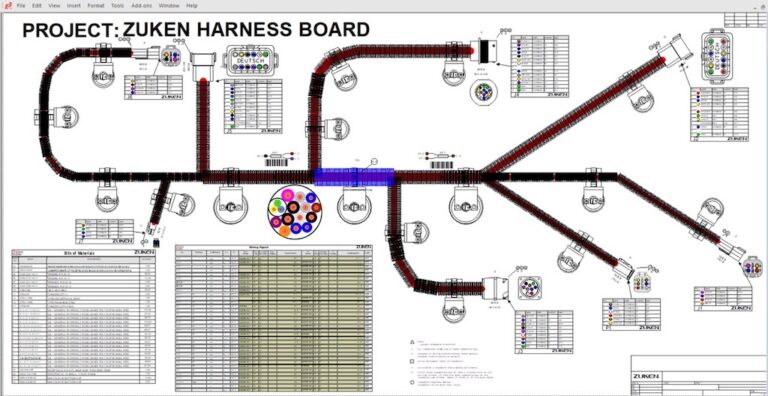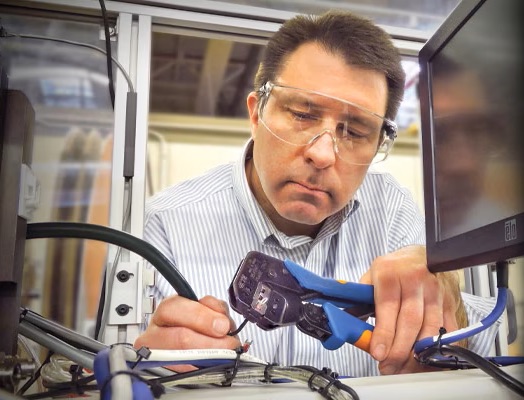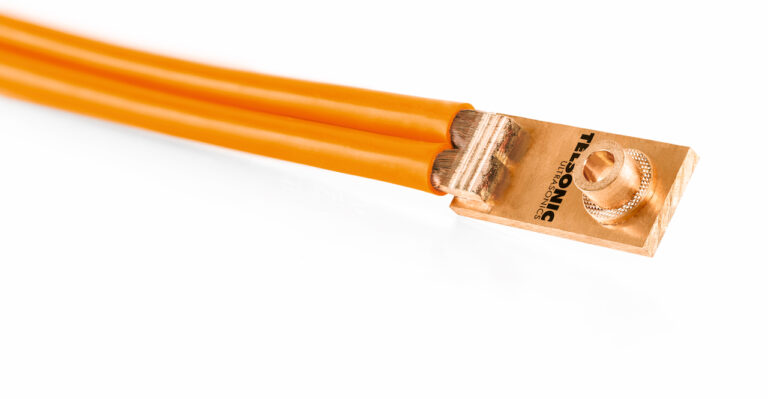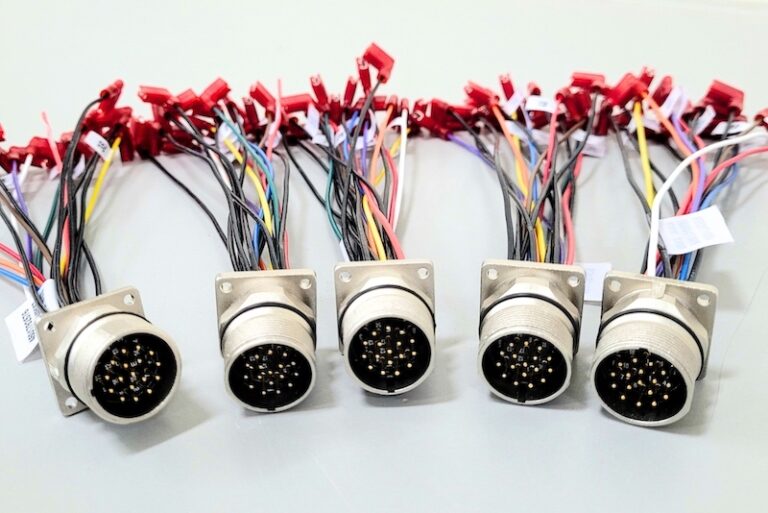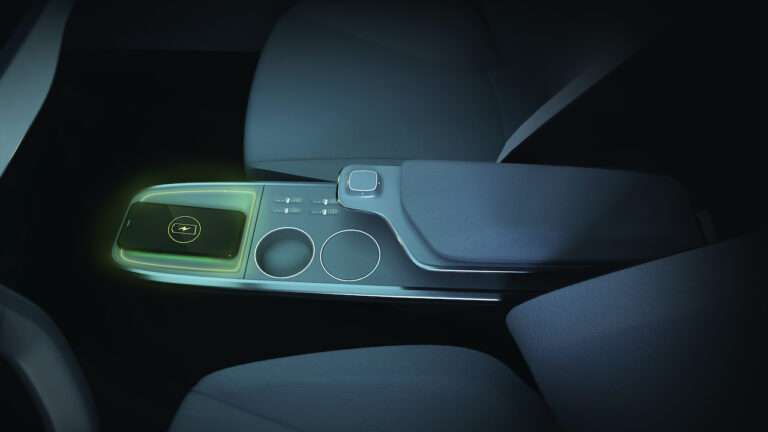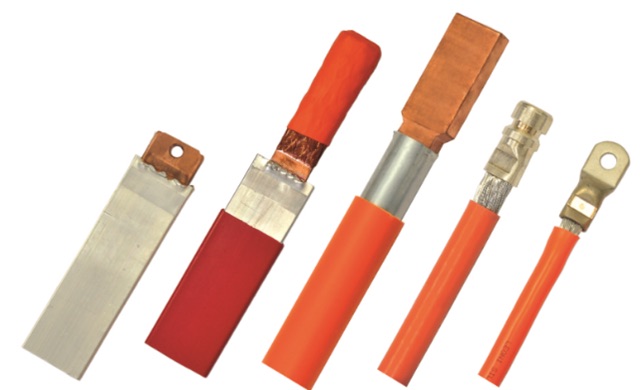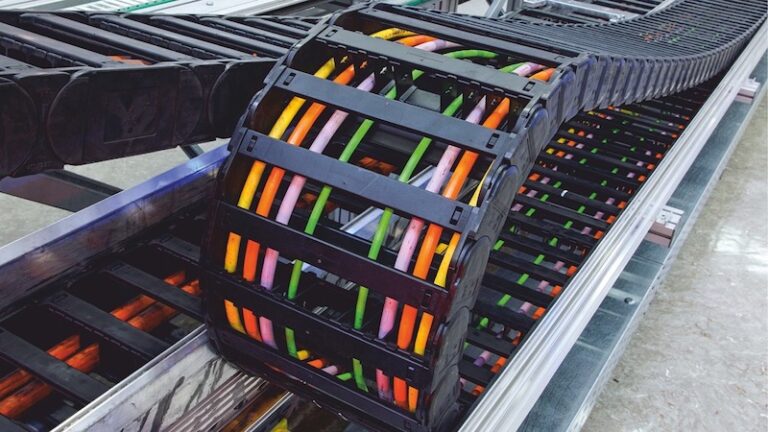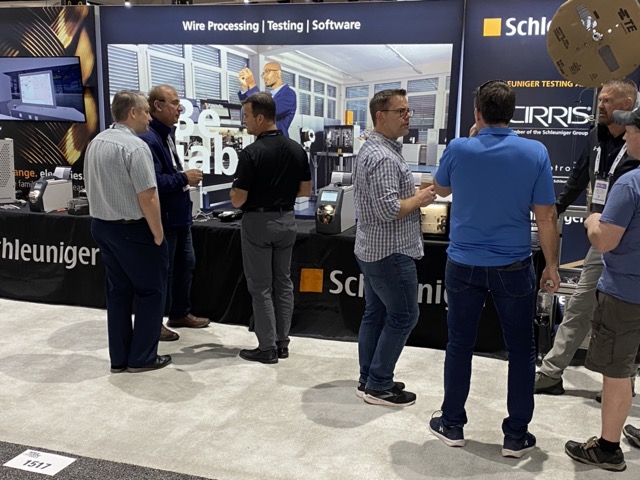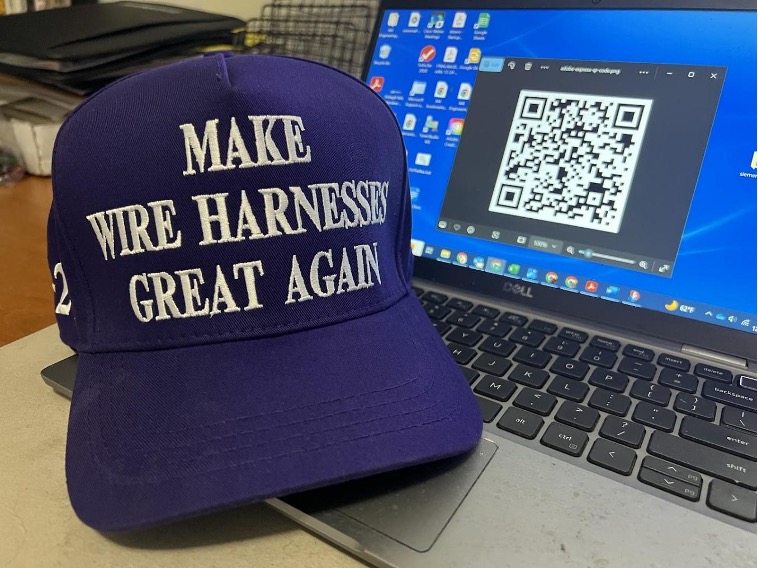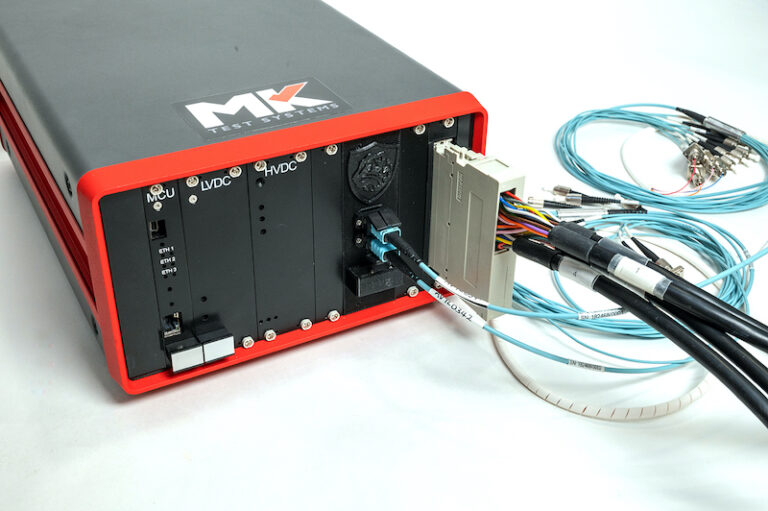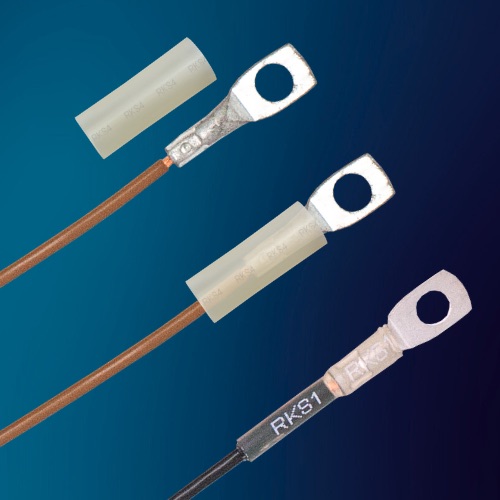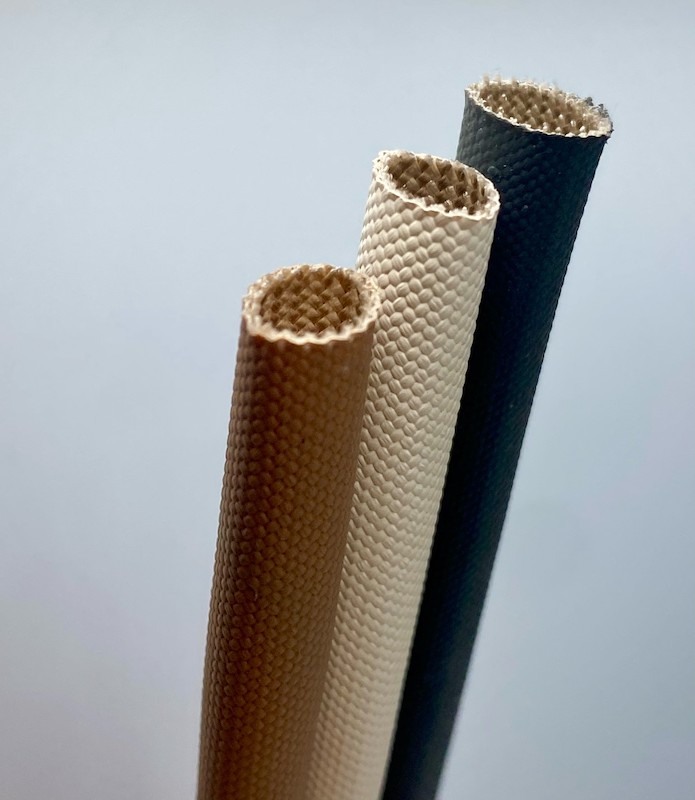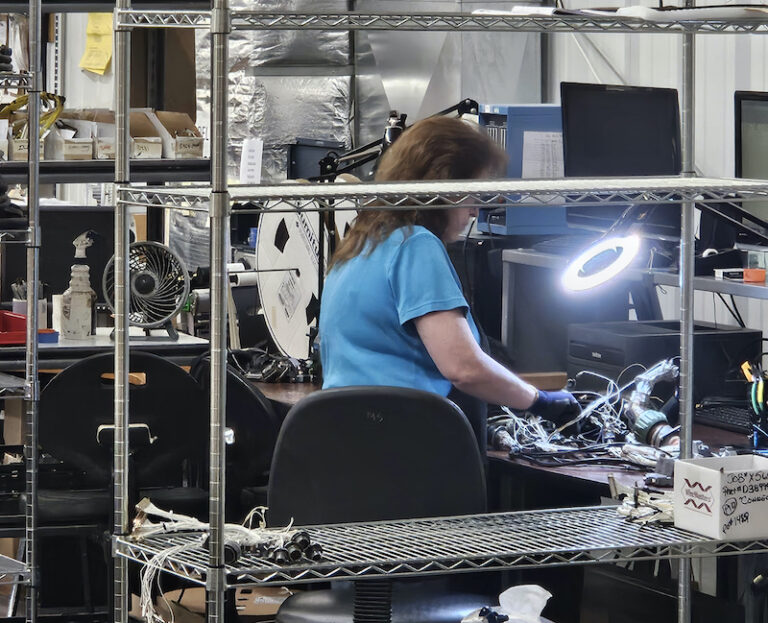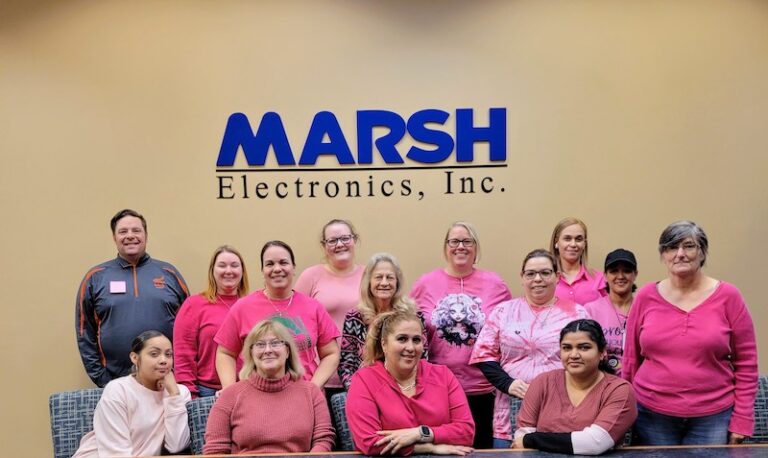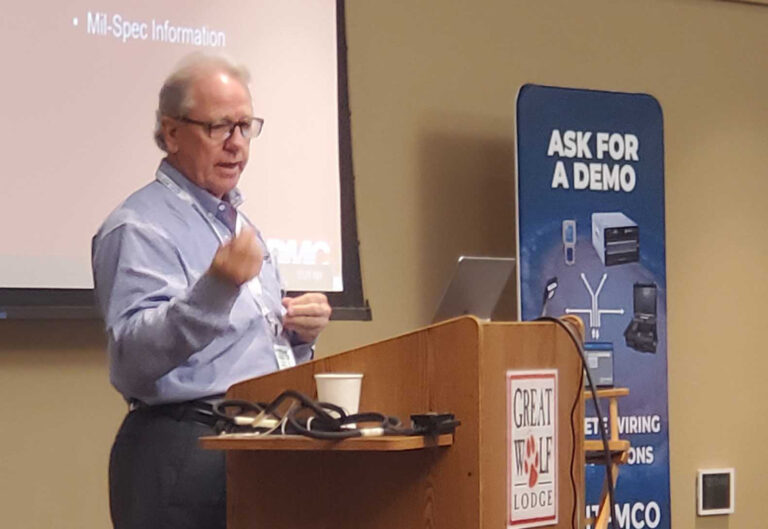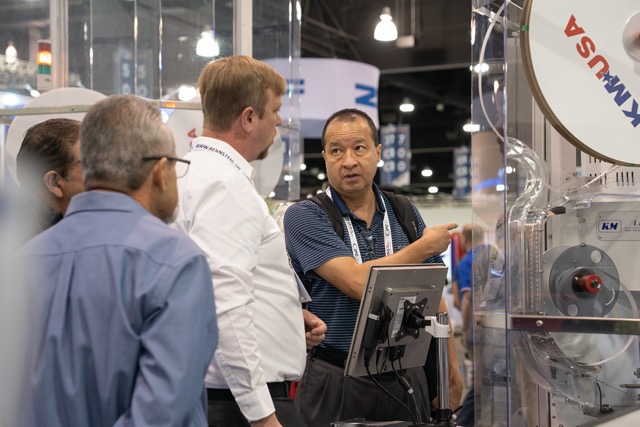– they should embrace them
By Chris Beevers, Business Unit Director – Device Connectors, Phoenix Contact Americas Business Unit

Devices used in industrial applications are undergoing multiple transformations in today’s fast-paced industrial environment. OEMs creating new products are dealing with opposing challenges when trying to design in connectivity. The Internet of Things (IoT) is fueling end users’ thirst for more data and faster processing. The upcoming 5G network only emboldens that thirst. Pressure to reduce the cost of equipment and systems is driving new products to offer increased functionality. Device manufacturers must take advantage of that functionality to ensure successful future products. However, the pressure to minimize size and make end products easier to integrate and install is always present.
The balance of meeting new trends and the classic needs of the market are a major challenge, and device manufacturers must think differently when creating new products. Standard connectors are not always the best choice to accomplish this. Customized connector solutions can help achieve the balance needed with many of these challenges.
Fast-forwarding to the IIoT
Today’s megatrend of the Internet of Things (IoT) is creating new problems. Industrial device OEMs are under pressure to bring new products to market that increase intelligence and functionality, while reducing overall product size. All of this must be done without sacrificing robustness. If new devices in industrial applications like controls, displays, or monitoring systems are not networked and easily accessible, the chance of their acceptance and success in the market is minimal. With the introduction of the IoT in the industrial world, the ever-expanding IIoT is connecting more industrial devices to other industrial things in the field. The upcoming 5G network will “hit fast-forward” on that trend in a major way.
The only way new devices can accomplish this is by expanding both the I/O counts at the controller and the networking capabilities of all field devices. Additional I/O for an industrial-grade device requires more connections that can be easily terminated in the field. Increasing the number of I/O counts within a device increases the size of that device. The constant pressure to reduce the overall size of devices on the floor and within a cabinet directly opposes this. Adding I/O while reducing size means more high-density connectors must be used.
When trying to increase the functionality of your product, the need for more data to process and the more signals to connect presents itself. The access to additional data of networked devices has only fueled the interest of acquiring even more data. Reports of 40 billion-plus connected devices within the IIoT over the next few years are everywhere.
This increasing appetite for data translates to increasing the number of networked end devices, and more connection points for the controller to manage. Increasing the amount of I/O in a device or integrating a new data connector for different networking protocols would be a simple achievement. However, the robustness of data connectors comes into question. Today’s data connectors are fast and inexpensive. But industrial networks require more robust data connectors with wider temperature ranges, higher and vibration protection, and protection against liquid ingress, such as IP67 ratings.
Advantages and disadvantages of off-the-shelf connectors
Today’s OEMs face even more challenges than just robustness, functionality, and density. They are constantly battling with competitive pressure. The features of their products alone may make them stand out. When that is the case, the OEM can simply go out and get a connector that works. When speed to market increases in importance, it’s great to have an off-the-shelf connector available. But the connector that works won’t always distinguish the individual product. Using an off-the-shelf connector comes at the expense of having an individual look and feel. New products are being developed faster than ever, making the market more crowded. With this influx of new devices, branding connectors with an individual look and feel becomes more important and can help a company’s device stand apart from the competition.
The risk of quality problems is another concern for OEMs. Going with a new contact system could open unknown problems that an off-the-shelf contact system has already addressed. The validation process of a new contact system can be long and pose unknown problems that could lead to production delays. Given the speed at which the industrial world is moving today, a delay in production could have significant costs, including loss of market share and loss of trust by the customer base.
To bring products to market faster in this global economy, strong communication with development and manufacturing partners is critical. For example, when development is in one country, and production is done by an EMS partner in another country, and distribution centers are in a third country, OEMs need to have better communications and work with partners who can handle global communications.
Addressing concerns
Each of these problems can have a relatively simple solution when taken on its own. However, the balancing between these issues is what poses the greater challenge.
When taking on the challenge of increasing the I/O and reducing the overall size of a device, the only answer is higher density connectivity. That sounds easy enough. But when taking into consideration the installation of your product and its usability, this becomes a significant challenge. For devices that require connection to multiple field devices, discrete wire termination will need to be accomplished somewhere. Utilizing a high-density connector on the controller and pushing the discrete wire connections to another part of the control cabinet only pushes the increased cost to another location that has the same challenge of space constraints.
Some connectors available today can help to reduce size. For example, moving from screw to spring terminations can reduce the overall size of the connection point, while increasing reliability and reducing cost (Figure 2).
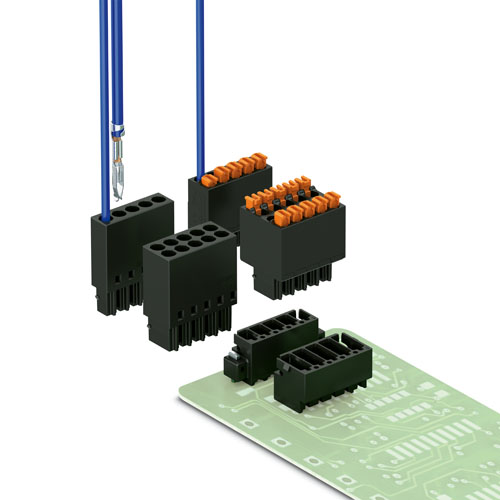
Another option might be to move to a hybrid-style connector that contains both power and signal connections, so it reduces the overall size of the connector (Figure 3). But when considering data connectivity, very few options are available. High-density office-grade connectors can’t withstand the high temperatures, higher shock, and vibration requirements, and in many cases the ingress protection from liquids, that industrial-grade connectors commonly possess. Standard off-the-shelf connectors just won’t meet the needs of industrial devices designed for the future. For example, adding screw flanges to a data connector can help, but the temperature ratings are not the same, and vibration at the contact interface can cause problems when using the thin gold plating often used in office-grade contact systems.
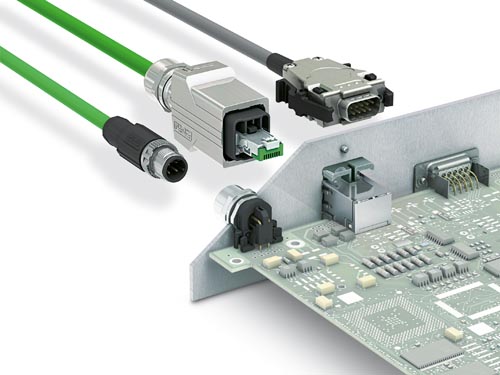
If you also need to consider the look and feel of your end product and want to create brand recognition, an off-the-shelf connector cannot provide that individual look and feel. Thus, marketing managers must spend time differentiating their products to achieve the brand recognition they need.
Time to market is critical today. Using an off-the-shelf standard connector solution will allow you to design in the connector quickly. But the design process may require additional time due to considerations to make that connector more robust. That means additional time in development and potentially additional costs in production.
Finding balance with custom connectors
When considering all challenges, a customized solution becomes more and more attractive. If one connector met everyone’s needs, there wouldn’t be thousands of different types of connectors available today. A customized solution can be designed for the OEM’s specific application and meet the individual needs better than an off-the-shelf option. Customized solutions can meet the density requirements while integrating the connector into the individual product’s packaging. A customized solution can consider usability in various environments and provide the individual look and feel to make end products stand out from the competition and strengthen the OEM’s brand.
A customized design can make the most efficient use of space in an application by including the power, signal, and data connectivity needs. By designing a connector for the specific need of a new industrial device, OEMs can achieve the greatest space savings without sacrificing the number of I/O or data connections. Increased robustness for data connectivity can also be achieved. A customized data connector can meet the typical shock and vibration requirements, temperature ranges, and ingress protection of liquids typical in industrial applications. With a customized solution, you can also integrate the connection technology into the electronic housing, ensuring the most efficient use of space and reducing overall assembly costs.
It is a common misperception that customized solutions are too expensive and take too long to design. When looking only at the unit cost of mass-produced commercial connectors and lead times for tooling, a customized solution might be higher. But considering the concessions that are needed in the design to meet the new trends, like increased functionality and reduction of the overall size and robustness in industrial environments, the cost for a custom solution becomes more attractive.
Tooling lead times must be considered, although new technologies like prototype tooling and additive manufacturing can greatly reduce times. Additive manufacturing technologies are getting close to the same performance of the materials used to make a connector. Printed metals are coming closer to the performance of stamped and formed high-conductivity copper, and plastic materials are also coming closer to the various high temperature ranges and flame retardancy needed for agency approvals (Figure 4).
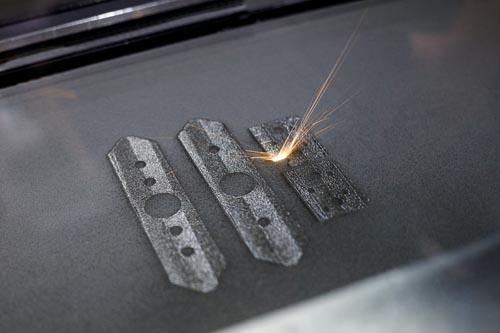
But it is not just the connector components that can benefit from additive manufacturing. It is also the tooling used to make them. Additive manufacturing can create tooling that otherwise can’t be made with traditional machining. As an example, additive manufacturing provides enough flexibility to place cooling lines in an injection mold in places that traditional machining cannot. In addition to how the molds are designed, printing injection molds and inserts can greatly reduce the lead time for injection-molded components, making it possible to get a custom connector solution up and running quickly.
Connector manufacturers today that have additive manufacturing capabilities in-house can be very valuable partners. They can experiment with new metal composites that can be printed and closely match the quality of traditional stamped and formed contact systems, or plastic materials that can come close to the performance of agency-approved plastics used in connector designs. Additive manufacturing is changing the way many OEMs consider custom connector solutions.
Working with a proven supplier with experience in customized solutions can help in multiple ways and greatly reduce the development timeline. By doing the necessary work, such as design validation and mold flow analysis, up front, a partner can reduce the development time by several weeks. In addition to that up-front work, when a connector partner has access to components from other connector designs that can be used in new custom solutions, they can address concerns regarding unknown problems with new contact systems.
A proven supplier with global recognition of the highest quality available is critical. By utilizing the connector components or the know-how of an existing contact system from a broad product offering and redesigning that into a new connector housing, the development timeline and tooling costs can be greatly reduced. That strategy can also reduce the time and cost associated with new agency approvals. The validation of a contact solution is a critical step in making sure you have a high-quality connection. Utilizing that know-how and existing validation is a significant savings.
All quality connector manufacturers have a development process with milestones. However, the typical development process for standard products is much different than one for custom products. When considering a standard product, a connector manufacturer needs to identify a need in the market, develop concepts, and revise and validate those concepts through customer feedback. This is usually done with multiple customers, all of whom have their own needs in mind. Designing a connector to meet multiple customers’ needs can take several concepts and variations to meet only a percentage of what all customers want. All that work must be done before the manufacturer finalizes the design or orders the component tool and assembly machines. This process could take months and sometimes years to finalize a concept.
When developing custom solutions, that process needs to be weeks, not months. OEMs must find a connector supplier that understands this and can adjust the development process in the concept stages to meet critical timelines.
A good custom connector partner will have a development process designed for customer-specific applications. It should be one that can be adjusted for the OEM’s specific timing needs. Providing budgetary proposals quickly with a high degree of accuracy is important (Chart 1). As the design concept becomes finalized and the development process continues, the accuracy of the proposal can increase. A connector partner with experience in developing custom connector solutions is extremely valuable.
When a custom connector solution is the right choice for an OEM, the next decision is choosing the right company to partner with. The wrong partner would only increase costs and development time, and ultimately create frustration.
Given the investment in time and money to develop custom solutions, choosing the right partner is critical for success. A valuable connector partner today should be able to offer consultation on connector design, not just provide the service of acting as a subcontractor for a new connector concept. Just defining the technical requirements can be difficult. But OEMs need to combine the technical requirements along with commercial requirements to come up with a solid business case and the best solution possible. A connector partner should have a deep understanding of not only plastics and contact design, but how those two components come together to make a quality connector that can be manufactured quickly and easily. A connector partner should be able to document a development plan, including a test plan at every step from concept through to high-volume production. The right partner should have a history of innovation and previously established global communication channels with multiple manufacturing locations in low-cost regions or locally in the U.S. and Europe.
Conclusion:
Industrial OEMs today face many challenges. Customized connector solutions offer great benefits compared with off-the-shelf connectors. What may seem like a large investment in time and money is really an affordable option, when considering the costs associated with trying to make an off-the-shelf connector fit in a new application.
When you consider the balance in meeting new trends of industrial devices and the development challenges they pose, a customized connector solution really stands out.






















